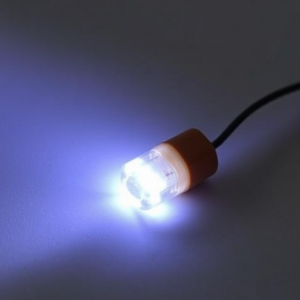Light sensors are electronic devices used to detect light and convert it into a signal that can be read or processed by a circuit. They are commonly used in things like street lights, automatic brightness adjustments for screens, or security systems.
Here’s a simple breakdown of how they work:

1. What is a Light Sensor?
A light sensor is a component that reacts to light and either generates a signal or changes its electrical properties based on the amount of light it detects. This allows it to measure how bright or dim the surrounding environment is.
2. How Do Light Sensors Work?
- Detection: Light sensors use materials that can change when light hits them. For example, certain materials can produce electricity when exposed to light (like a solar panel), while others change their resistance or current.
- Conversion: Once the sensor detects the light, it converts that information into a form that can be used by the circuit (like a voltage or resistance change).
3. Types of Light Sensors:
There are a few different types of light sensors, each working in slightly different ways:
- LDR (Light Dependent Resistor):
- This is a type of resistor whose resistance changes based on how much light hits it.
- When the light is bright, the resistance decreases, and when the light is dim, the resistance increases.
- LDRs are simple and inexpensive, but they can be slow to respond to changes in light.
- Photodiodes:
- These are semiconductor devices that generate current when exposed to light.
- They are more sensitive and fast than LDRs and can detect light levels more accurately.
- Phototransistors:
- A phototransistor is similar to a photodiode, but it amplifies the current generated by the light, making it easier to detect.
- It works like a normal transistor but responds to light instead of voltage.
- Photovoltaic Cells (Solar Cells):
- These convert light directly into electrical energy, which can be used to power devices (like solar-powered calculators).
- They’re great for converting sunlight into energy.
- Infrared Sensors:
- These sensors detect infrared light (which is invisible to the human eye but can be emitted by hot objects or certain light sources).
- They are often used in motion sensors or night-vision equipment.
4. What Do Light Sensors Do in a Circuit?
Light sensors are used in circuits to measure light levels and adjust the system’s behavior based on that data. For example:
- Automatic Lighting: In outdoor lighting, light sensors can turn the lights on when it gets dark and off when the sun comes up, saving energy.
- Brightness Control: Some smartphones or computer screens have sensors that detect the surrounding light and automatically adjust the screen’s brightness for optimal visibility.
- Security Systems: Light sensors can detect changes in lighting caused by movement, helping to trigger alarms in security systems.
5. How Are Light Sensors Used in Circuits?
- In an Analog Circuit: The light sensor (like an LDR or photodiode) might be part of a voltage divider or a signal circuit. As light changes, the sensor alters the voltage, and the circuit can process the change.
- In a Digital Circuit: Light sensors can send a digital signal (on/off) depending on the light level, which the microcontroller or microprocessor can use to make decisions or trigger actions.
6. Why Are Light Sensors Important?
- Automation: Light sensors help make systems smarter by enabling them to automatically respond to environmental changes without human input.
- Energy Saving: They can help save energy by ensuring that lights or other devices are only on when needed.
- Improved User Experience: In devices like phones, light sensors enhance the user experience by automatically adjusting settings for optimal visibility or performance.
Example Use Case: Automatic Street Lighting
Imagine a streetlight with a light sensor built into it. During the day, when there’s plenty of sunlight, the sensor detects that there’s enough light and keeps the streetlight off. As the evening approaches and it gets darker, the sensor detects less light and automatically turns the streetlight on.
In Conclusion:
Light sensors are simple yet powerful components that allow electronic circuits to “sense” and respond to light. They are used in many applications to make devices more energy-efficient, user-friendly, and automated. They work by detecting light and converting that information into electrical signals that a circuit can process and react to.
Tags: ambient light sensors, analog light sensors, automatic lighting control, automatic street lighting sensors, brightness adjustment sensors, digital light sensors, electronic light sensors, energy-saving sensors, environmental light sensing, how light sensors work, infrared light sensors, LDR sensors, light detection and conversion, light detection devices, light sensor advantages, light sensor applications, light sensor automation, light sensor circuits, light sensor disadvantages, light sensor examples, light sensor for brightness control, light sensor for security systems, light sensor in electronics, light sensor signal processing., light sensor technology, light sensor voltage output, light sensors, light sensors for energy efficiency, light sensors for motion detection, light sensors for smartphones, light sensors in circuits, light sensors in security alarms, light sensors in user devices, light-dependent resistor, night vision infrared sensors, photodiode sensors, photodiode vs LDR, phototransistor sensors, Photovoltaic Cells, sensor for light intensity, sensor resistance changes, sensor-based light control, Sensors, smart light sensors, Solar cells, solar-powered sensors, streetlight light sensors, types of light sensors, what are light sensors


